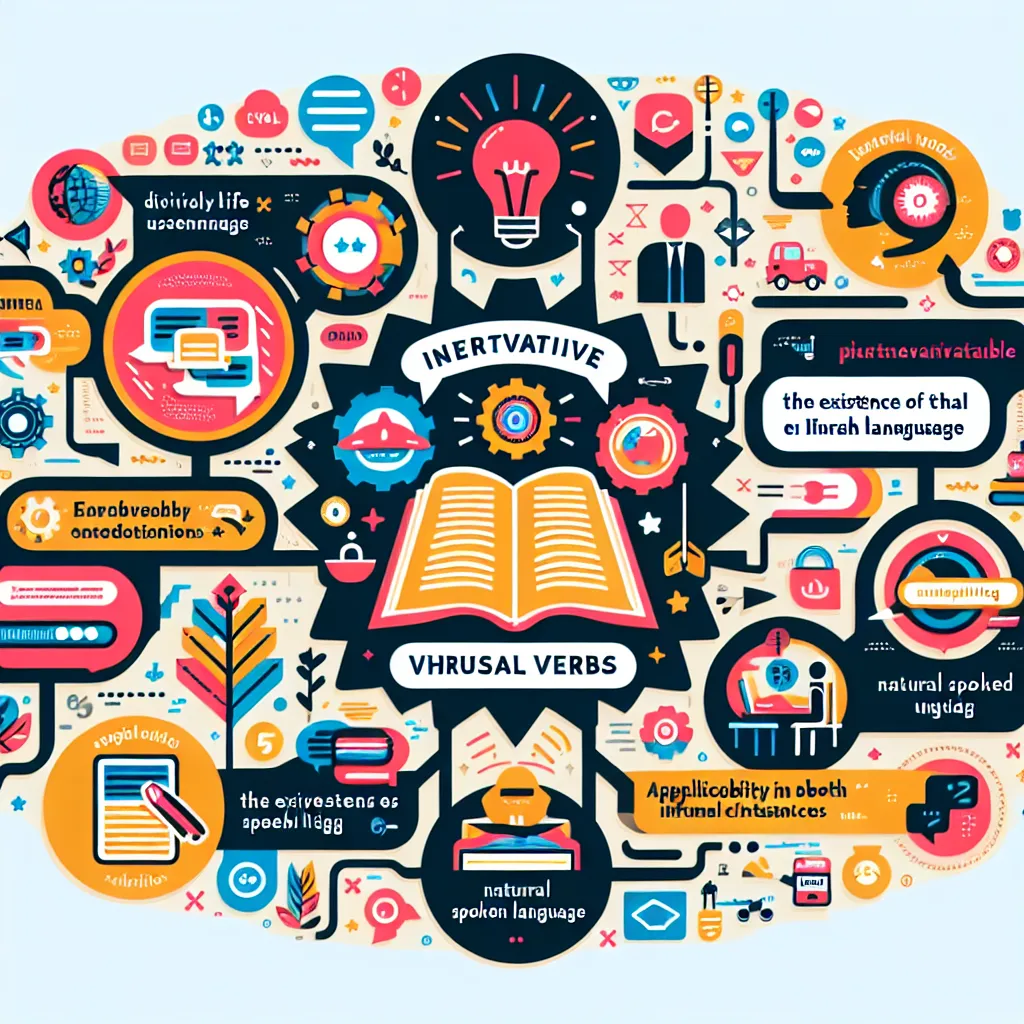Phrasal verbs are an essential part of the English language, and mastering them can significantly enhance your fluency and communication skills. In this guide, we’ll explore How To Use Complex Phrasal Verbs effectively, providing you with valuable insights and practical tips to boost your English proficiency.
Understanding Complex Phrasal Verbs
Complex phrasal verbs are multi-word expressions that consist of a verb and one or more particles (usually prepositions or adverbs). These combinations often create meanings that are different from the individual words, making them challenging for English learners.
Why Are Complex Phrasal Verbs Important?
Complex phrasal verbs are crucial for several reasons:
- Natural speech: Native English speakers frequently use phrasal verbs in everyday conversations.
- Vocabulary expansion: They help you express ideas more precisely and idiomatically.
- Cultural understanding: Many phrasal verbs have cultural connotations that provide insights into English-speaking societies.
 Illustration of complex phrasal verbs
Illustration of complex phrasal verbs
Strategies for Learning Complex Phrasal Verbs
1. Categorize Phrasal Verbs
Group phrasal verbs by their base verbs or themes. For example:
- Phrasal verbs with “get”: get along, get by, get over, get through
- Phrasal verbs related to relationships: break up, make up, fall out, hit it off
This method helps you recognize patterns and remember them more easily.
2. Learn in Context
Instead of memorizing lists, learn phrasal verbs in sentences or short stories. This approach helps you understand their usage and remember them better. For instance:
“Sarah and Tom broke up last month, but they’ve decided to make up and give their relationship another chance.”
3. Use Visual Aids
Create mind maps or flashcards with images representing the meaning of phrasal verbs. Visual associations can significantly improve retention.
4. Practice Regularly
Incorporate phrasal verbs into your daily English practice. Try to use them in conversations, writing exercises, or even create short stories using multiple phrasal verbs.
Common Complex Phrasal Verbs and Their Usage
Let’s explore some frequently used complex phrasal verbs:
-
Break down
- Meaning: To stop functioning; to analyze in detail
- Example: “My car broke down on the highway.” / “Let’s break down the project into smaller tasks.”
-
Look up to
- Meaning: To admire or respect someone
- Example: “Many young athletes look up to Serena Williams.”
-
Run out of
- Meaning: To exhaust a supply of something
- Example: “We’ve run out of milk. Could you buy some on your way home?”
-
Get away with
- Meaning: To do something wrong without being punished or caught
- Example: “He thought he could get away with cheating on the test, but the teacher caught him.”
-
Put up with
- Meaning: To tolerate or endure something unpleasant
- Example: “I can’t put up with this noise anymore. Let’s move to a quieter neighborhood.”
Tips for Mastering Complex Phrasal Verbs
-
Pay attention to separability: Some phrasal verbs can be separated by their object, while others cannot. For example:
- Separable: “Turn off the light” or “Turn the light off”
- Inseparable: “Look after the children” (NOT “Look the children after”)
-
Notice register: Some phrasal verbs are more informal than their single-word counterparts. For instance, “put off” (informal) vs. “postpone” (formal).
-
Use a phrasal verb dictionary: These specialized dictionaries provide detailed explanations and example sentences for each phrasal verb.
-
Watch English media: TV shows, movies, and YouTube videos are excellent sources for hearing phrasal verbs used in context.
-
Create your own examples: After learning a new phrasal verb, write several sentences using it in different contexts to reinforce your understanding.
 Person practicing phrasal verbs
Person practicing phrasal verbs
Common Mistakes to Avoid
-
Overusing phrasal verbs: While they’re important, don’t force them into every sentence. Use them naturally.
-
Ignoring context: Remember that many phrasal verbs have multiple meanings depending on the context.
-
Misunderstanding separability: Be careful with separable phrasal verbs and where to place the object.
-
Neglecting prepositions: Pay attention to the correct prepositions used in phrasal verbs, as they can change the meaning entirely.
Next Steps in Your Phrasal Verb Journey
-
Create a phrasal verb journal: Write down new phrasal verbs you encounter, along with their meanings and example sentences.
-
Set weekly goals: Challenge yourself to learn and use a certain number of new phrasal verbs each week.
-
Join language exchange communities: Practice using phrasal verbs with native speakers or other learners.
-
Take online quizzes: Test your knowledge regularly with online phrasal verb quizzes and exercises.
-
Read extensively: Expose yourself to a variety of English texts to encounter phrasal verbs in different contexts.
By following these strategies and tips, you’ll be well on your way to mastering complex phrasal verbs and enhancing your overall English proficiency. Remember, consistent practice and exposure are key to becoming comfortable with these essential language components.
For more tips on improving your English skills, check out our guides on mastering English grammar and enhancing English listening during conversations. Keep practicing, and you’ll see significant improvements in your ability to use complex phrasal verbs naturally and confidently!




